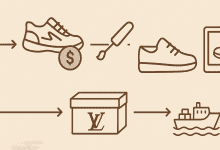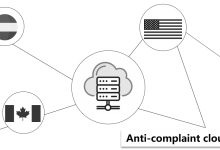In one of our earlier articles, we explained the evolution of payment methods in replica eCommerce:
👉 “A Brief History of Payment Methods in Replica e-commerce Websites.”
Today, I am here again to highlight the core private payment solutions commonly used by Putian- and Guangzhou-based replica sellers. These include:
-
Western Union
-
MoneyGram
-
WISE (formerly TransferWise)
These offline payment methods are especially popular in private traffic scenarios and with repeat buyers. Why? Because first-time buyers often face trust issues, making online payments like PayPal or Stripe a safer initial choice.
But does that mean own e-commerce replica sites only need PayPal and Stripe, and can ignore Western Union, MoneyGram, and Wise?
❌ Absolutely not.
In many markets, first-time offline transactions are completely achievable through discount incentives, direct chat-based negotiation, or manual invoice customization. That’s why, for anyone running a replica-focused own e-commerce site, integrating Western Union, MoneyGram, and Wise is not optional—it’s essential.

Over the years in this industry, we’ve learned that buyer trust varies significantly across countries. In certain markets, as long as the discounts are attractive and chat-based negotiation is handled properly, many customers are perfectly willing to pay in advance—yes, even for the first purchase.
This “pay-first-ship-later” model is exactly what most replica-focused own e-commerce website sellers dream of. After all, given the sensitive nature of the business, getting paid upfront is the safest and most favorable approach.
Now, let’s break down how these three offline payment methods are commonly used in the replica eCommerce ecosystem, starting with Western Union.
Western Union (WU) Payment Guide for Replica Sellers
What do you need to provide your buyer to send money via Western Union?
-
Full Name of the recipient (e.g., Marcus Steele)
-
City name (e.g., New York is enough; full address is usually not required)
-
Phone number (a reachable mobile number)
Buyers can send funds directly via the official Western Union website: westernunion.com. Once the transfer is completed, the buyer will receive a 10-digit MTCN code (Money Transfer Control Number), which is needed to collect the payment.

Once the buyer sends the payment, they will receive a 10-digit MTCN code — this is essentially the withdrawal password.
The buyer shares this MTCN code with the seller (you), and with it, the seller can collect the payment from a local Western Union agent or via online channels, depending on the country.
With Western Union, you can receive funds in a wide range of currencies — including USD, EUR, AUD, CAD, and almost all major global currencies. This makes it highly flexible for replica sellers targeting international markets.
The MoneyGram payment process is virtually identical to Western Union, so we won’t repeat the steps here.
WISE (formerly TransferWise) has become an increasingly popular payment method among replica eCommerce sellers, especially in regions where Western Union and MoneyGram are either unavailable or carry higher risks.

Unlike traditional remittance services, WISE operates more like a global banking network, allowing you to receive payments directly into a multi-currency account with local bank details in countries like the US, UK, EU, Australia, and more.
For sellers, this means:
-
You can provide buyers with a legit-looking local bank account (e.g., a US routing number + account number).
-
The buyer simply makes a domestic transfer on their end — faster, cheaper, and less suspicious.
-
Funds arrive in your WISE balance, often within minutes to a few hours, depending on the country and payment method used.
This makes WISE a great choice for markets with strict compliance checks, or when you want to build trust with first-time buyers by offering a more “official” payment channel.
 Custom E-commerce Solutions for High-Quality Designer-Inspired Fashion Replicas | Website Development, Dropshipping, Payment Integration for PayPal and Stripe, Ad Cloaking Services
Custom E-commerce Solutions for High-Quality Designer-Inspired Fashion Replicas | Website Development, Dropshipping, Payment Integration for PayPal and Stripe, Ad Cloaking Services



























![5 Best WordPress Themes for Replica Product International Trade Websites [Recommended]-Custom E-commerce Solutions for High-Quality Designer-Inspired Fashion Replicas | Website Development, Dropshipping, Payment Integration for PayPal and Stripe, Ad Cloaking Services](https://replicasmaster.com/wp-content/uploads/2025/06/1-1-220x150.jpg)
